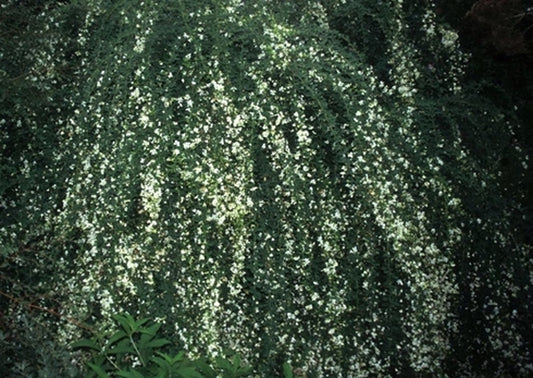Lespedeza prefers well drained soil and are drought tolerant once established. Most of our lespedeza plants are fall bloomers and all the varieties we offer are dieback perennials.
-
Lespedeza thunbergii 'Gibraltar'
Item #: 2003
Zones: 4a to 9b
Dormancy: Winter
Height: 72" tall
Culture: Sun to Part Sun
Origin: Japan
Pot Size: 3.5" pot (24 fl. oz/0.7 L)
Regular price $27.00Regular priceUnit price per -
Lespedeza thunbergii 'Little Volcano'
Item #: 6312
Zones: 6a to 9b, guessing
Dormancy: Winter
Height: 84" tall
Culture: Sun
Origin: Japan
Pot Size: 3.5" pot (24 fl. oz/0.7 L)
Regular price $27.00Regular priceUnit price per -
Lespedeza thunbergii 'White Fountain'
Item #: 1512
Zones: 4a to 9b
Dormancy: Winter
Height: 72" tall
Culture: Sun to Part Sun
Origin: Japan
Pot Size: 3.5" pot (24 fl. oz/0.7 L)
Regular price $27.00Regular priceUnit price per
More Information About Lespedeza
Lespedeza is a member of the legume family and is a genus that includes upwards of 40 species, including hybrids. They are commonly known as bush clovers or Japanese clovers when referring to certain East Asian species. While most are indeed horrible weeds, there are several non-weedy ornamental species, and it is these on which we have focused our efforts.
Bush clover are amazingly adaptable and easy to grow in a wide range of garden conditions. The species that we grow are all dieback perennials and their arching, weeping form make them perfect for growing on hillsides, over walls, and along fences. Lespedeza thunbergia has even achieved the Royal Horticultural Society's Award of Garden Merit which is only given to plants that are exceptionally reliable in the garden and have reasonable resistance to pests and disease.
Tips for Growing Lespedeza (Bush Clover)
Like all pea plants, they form a symbiotic relationship with nitrogen fixing bacteria that enriches the soil around the plant. Lespedeza should be pruned back in the spring. It blooms on new growth. Most of our lespedeza plants bloom in the fall as other plants are fading out. Lespedeza prefer good drainage and tolerate drought once established. Bees and butterflies like sipping on the sweet nectar. It is worth noting that some lespedeza are North Carolina native plants.




